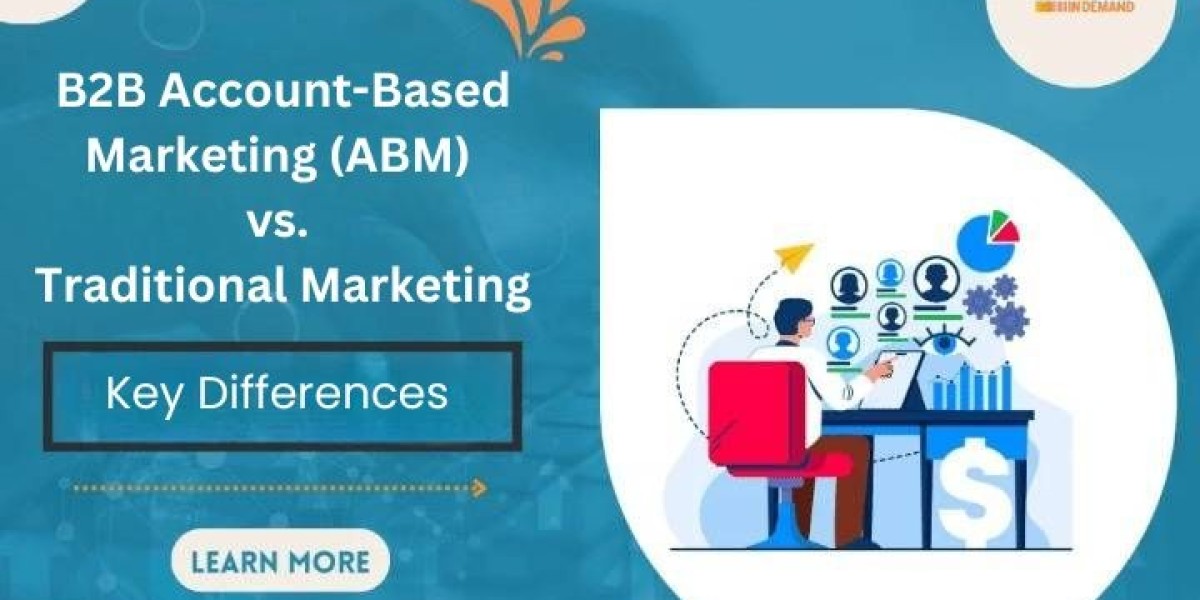Introduction
The evolution of marketing has given rise to a new contender in the B2B space: Account-Based Marketing (ABM). In contrast to traditional marketing strategies that focus on broad reach, ABM takes a laser-targeted approach to reach specific high-value accounts. So, which approach is right for your business? This article compares the key differences between B2B Account-Based Marketing and traditional marketing to help you choose the best strategy for your business.
What is Account-Based Marketing (ABM)?
Account-based marketing is a strategic B2B approach where businesses target specific key accounts with personalized campaigns, treating each account as a market of its own. ABM focuses on quality over quantity, aiming for higher conversion rates from fewer, high-value targets.
- Personalization at Scale: ABM tailors messaging and campaigns to each specific account, often relying on data insights to deliver personalized content.
- Focused Resources: Marketing and sales teams work together to concentrate on a few targeted accounts rather than casting a wide net.
- Better Alignment Between Marketing and Sales: ABM often involves closer collaboration between marketing and sales departments, creating a unified effort in targeting and nurturing leads.
What is Traditional B2B Marketing?
Traditional B2B marketing aims to generate as many leads as possible by appealing to a broad audience. Campaigns are typically designed to attract leads through general messaging and wider distribution channels like email campaigns, ads, and content marketing.
- Mass Outreach: Traditional marketing focuses on a larger pool of potential customers, generating leads through broad-based marketing strategies.
- Brand Awareness: A primary goal is to increase brand visibility in the market, reaching many potential customers.
- Sales Funnel Approach: Leads are gathered in the top funnel and gradually nurtured until they convert into customers.
Key Differences Between ABM and Traditional B2B Marketing
- Target Audience
- ABM: Highly targeted, focusing on specific high-value accounts or even individual decision-makers within those accounts.
- Traditional Marketing: Broadly targets a wide array of prospects within a larger market.
- Content and Messaging
- ABM: Personalized content designed to address the specific pain points, needs, and interests of the targeted accounts.
- Traditional Marketing: More generalized messaging intended to appeal to a broader audience.
- Sales and Marketing Alignment
- ABM: Close collaboration between marketing and sales, often working together to identify and target specific accounts.
- Traditional Marketing: Marketing often works independently from sales, focusing on lead generation while sales teams handle closing.
- Success Metrics
- ABM: Success is measured by engagement, account conversions, and revenue from targeted accounts.
- Traditional Marketing: Metrics often focus on the volume of leads, impressions, and overall brand reach.
- Tools and Technologies
- ABM: Often relies on advanced marketing automation tools, CRM integrations, and account-specific tracking to deliver personalized experiences.
- Traditional Marketing: Typically uses broader tools like mass email marketing platforms, social media scheduling tools, and analytics platforms that track wide-ranging data.
- Return on Investment (ROI)
- ABM: Offers a higher ROI due to its focus on high-value accounts that are more likely to convert.
- Traditional Marketing: ROI can be lower as the focus is on volume rather than quality, which may result in a larger number of unqualified leads.
Pros and Cons of ABM
- Pros: High personalization, higher conversion rates, better alignment between sales and marketing, more targeted resource allocation.
- Cons: Time and resource-intensive, requires strong collaboration between teams, fewer leads (but higher quality).
Pros and Cons of Traditional Marketing
- Pros: Wider reach, easier to scale, generates large volumes of leads, effective for brand awareness.
- Cons: Lower personalization, potentially lower lead quality, misalignment between sales and marketing teams.
Which Approach is Right for You?
The choice between ABM and traditional marketing largely depends on your business goals, target audience, and resources. If your business targets a niche market with specific, high-value accounts, ABM may provide a better ROI and stronger customer relationships. On the other hand, if you're looking to grow brand awareness and reach a broad audience, traditional marketing might be more effective.
For some businesses, a hybrid approach may be the best solution, combining the personalized touch of ABM with the broad reach of traditional marketing.
Conclusion
Both ABM and traditional marketing have their strengths and weaknesses. Understanding the core differences can help you align your marketing strategy with your business objectives. Whether you choose ABM for its precision or traditional marketing for its scalability, the key is to adapt and evolve with the changing B2B landscape.







